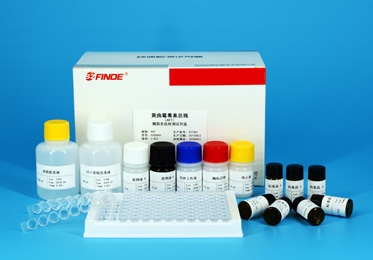

Fumonisin B1 (FB1) ELISA Kit
- Cat. No.:E007001
- Spec.:96T/kit
- Method:ELISA
- Storage: 2℃ to 8℃
- Shelf life:12months
- Sample: Corn, Feed
Principle and application
Fumonisins are mycotoxins produced by Fusarium moniliforme, with 28 known derivatives. Among them, Fumonisin B1 (FB1) is the most common and extensively studied. It has been found to contaminate maize and its products, including animal feed. FB1 exhibits the highest toxicity among fumonisins and poses serious toxicological effects on various animals. Research indicates that FB1 can induce leukoencephalomalacia in horses and pulmonary edema syndrome in pigs. Additionally, it is associated with the development of esophageal, liver, and gastric cancers in humans, posing hazards to both livestock and human health.
The kit is composed of Microtiter Plate coated with coupled antigens, FB1-HRP enzyme conjugates, antibodies, standards and other supporting reagents. During the detection, with adding standards or samples, the FB1 in the samples will compete with the coupled antigens to combine with anti- FB1 antibodies. After adding enzyme conjugates, take coloration with TMB substrates. Absorbance value of the samples is a negative correlation with FB1 residue content. Lastly, comparing with the standard curve, the obtained concentration is multiplied by the sample dilution ratio. FB1 residues in sample can be concluded.
Technique Data
>Kit Sensitivity: 1ppb (ng/mL)
>Reactive Mode: 25℃, ,30min~15min
>Detection Limits:
|
Sample |
Detection Limits |
|
Corn, Feed |
150ppb |
>Cross-reaction Rate:
Fumonisin B1 ………………………………………….100%
>Sample Recovery Rate:
|
Sample |
Recovery Rate |
|
Feed |
95±15% |
|
Corn |
100±15% |
If you would like to receive the latest product manuals and brochures, please feel free to let us know which product's information you require, and we will be happy to provide it to you promptly.
Email: Icey@finderbio.com

.jpg)
.jpg)
